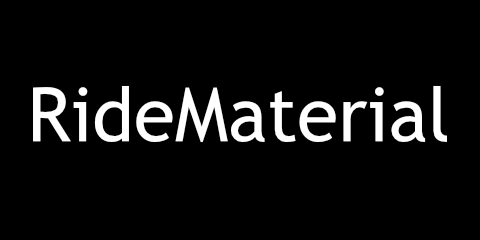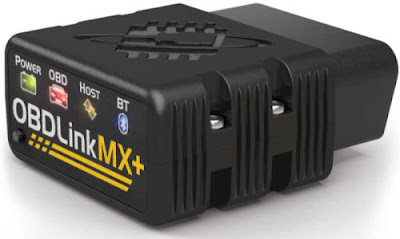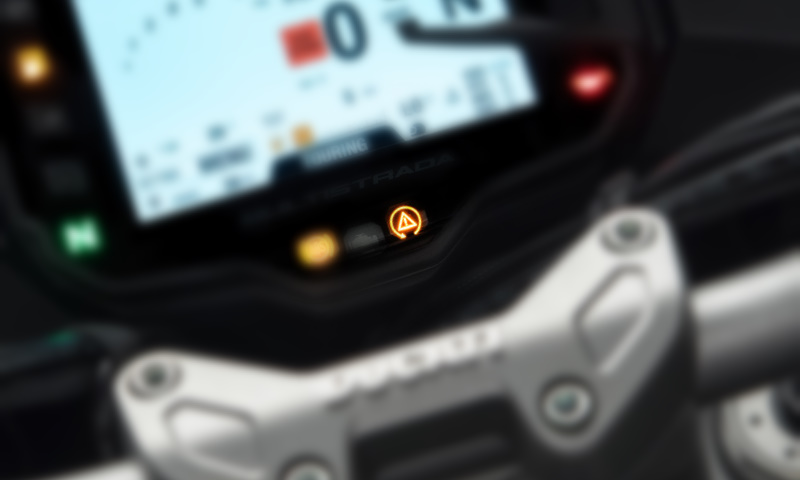
Motorcycle OBD2: A Beginner's Complete Guide with Pictures

If you’ve ever seen that ominous check engine light flashing on your motorcycle console, you may have wondered what it means and how to address it (other than going to the dealership). And if you tried to delve into that subject, you likely came across terms like “on board diagnostics”, “OBD”, “OBD II”, or “OBD 2”, and saw what a confusing rabbit hole it can be. Well, worry not. This post will demystify everything you’ve wanted to know about OBD2 on motorcycles.
Just want the quick answer to whether your motorcycle has OBD2?
Motorcycle models by European or American brands manufactured onwards of 2016 generally are OBD2 compliant. Models by Japanese / Asian brands, and those made before 2016, usually are not OBD2 compliant. However, some diagnostic scanners are still compatible with bikes that aren't OBD2-equipped.
But wait. What on earth is OBD, in the first place? Why should (or shouldn’t) you care? How does it apply to motorcycles, and does it apply to yours? And how are you supposed to deal with OBD related issues if they pop up on your bike?
Well, to find out all that and more, read on!
Contents
How prevalent is OBD2 on motorcycles?
Where's the diagnostic port on my bike?
What if a scanner shows an error code on my bike?
What is OBD2, anyway?
On-Board Diagnostics (OBD) is a self-diagnostic system for vehicles. Its main purpose is to bring any errors or malfunctions in the vehicle, to the user’s attention, via a malfunction indicator light (MIL). The system makes it possible to diagnose and troubleshoot such errors by connecting a scanner or computer to a port on the vehicle, without having to take the whole vehicle apart.
OBD has been around in cars since 1991, thanks to California laws that made it mandatory for cars (but not motorcycles). This was OBD1, or just OBD. One of the problems with the first generation of OBD was that different car makers used different approaches to implement the diagnostics system. As a result, reading data from these systems was difficult since each manufacturer’s system was using a different “protocol” or language.
To address this, the US passed laws in 1996 to limit diagnostic systems to just five protocols. This was the genesis of OBD2 -- a standard to ensure that self-diagnostic systems all speak more or less the same language. Then, in 2008, US laws required all OBD systems to use the 15765 protocol (aka “CAN” protocol), effectively bringing down five languages to just one language.
This makes it really simple to use diagnostic tools on cars. Because car diagnostic systems all speak the same language, pretty much any OBD2 scanner can be plugged into a car’s diagnostic port, and data obtained successfully. It doesn’t matter what make or model the car is, they’ll all “talk” the same way to a scanner.
If you’d like to know more about the background and history of OBD2, check out this great video. (It’s mainly about cars, but it’s still useful.)
Is OBD2 prevalent on motorcycles?
In recent years, an increasing number of motorcycle manufacturers have also been adopting self-diagnostic systems on their motorcycles. But since the ‘96 and ’08 laws don’t apply to motorcycles, there’s a lot of variation in how different motorcycle manufacturers have implemented diagnostic systems.
What this means is that even if a motorcycle does have a diagnostic port hidden away somewhere, getting data from it may not be as straightforward as with a car. Firstly, the port itself varies in configuration across bikes. This is like trying to connect a USB-A type connector to the Thunderbolt ports on a Mac -- it doesn’t work.
Secondly, even if the port does fit a scanner (or you use an adapter), the language that the bike speaks may not be the same as the scanner. So, a standard OBD2 scanner may not be able to read any data from the bike.
And lastly, even if the scanner can “talk” to the bike’s diagnostic system, its responses may be cryptic, using codes that don’t make any sense. (Unless you use the bike manufacturer’s proprietary software to unravel what those codes mean.)
Some motorcycle brands like Harley Davidson have implemented on-board diagnostics across all their models for many years now. And, like on cars, Harley OBD systems also use the CAN protocol, which means any regular OBD2 scanner will work well with them.
Except for one problem.
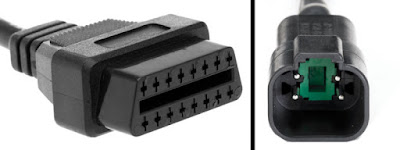 |
| Standard J1962 16-pin connector used in car OBD2 ports vs DT06-4S in most Harley Davidson bikes |
The diagnostic port on Harleys is not a standard OBD2 port. So you need to use an adapter to connect the diagnostic port on a Harley to an OBD2 scanner.
To give you another example, most models by Japanese manufacturers such as Suzuki, Kawasaki and Honda, don’t work with all OBD2 scanners. Even if you use an adapter to connect to the ports on these bikes, most of them don’t run on the CAN protocol. So, not all OBD2 scanners can read data from these bikes.
Getting the manufacturer’s proprietary diagnostic tool will of course let you access the data (this is what your dealership uses). But these tools are expensive, often running into hundreds of dollars, if not more. Besides, they’re generally not sold to the general public, so even if you’re prepared to buy one, procuring it can be quite difficult.
(There are third-party tools and software that can get around these restrictions, but we’ll talk about this later.)
Why should I care about OBD2 as a motorcyclist?
Well, for a couple of reasons:
1. It could save you time and money. If your bike does have a diagnostic port, being able to read data from it may help you avoid quite a bit of inconvenience and expenditure, by diagnosing problems without taking the bike to the dealership.
Say the malfunction indicator light (MIL) on your bike starts flashing. If you can connect a scanner to your bike, you’ll be able to get the specific diagnostic trouble code (DTC). This will point you towards the source of the problem (a faulty oxygen sensor, for example).
You can then decide whether it’s a simple fix that you can do yourself, a brief glitch that needs no action other than to erase the error code, or something more serious that requires taking the bike to the dealership ASAP.
Of course you could just ask the dealer to diagnose it instead of doing it yourself, but they’ll charge you more than a few dollars just to plug a scanner to the bike and tell you what the problem is.
2. It may help you customize your bike. One of the side-effects of having OBD systems on your bike is that connecting aftermarket accessories might be a little tricky.
When you connect an accessory on a particular circuit on your bike -- an auxiliary light, for example -- more current flows through that circuit than usual. The bike’s sensors may detect this as abnormal, prompting the electronic control unit (ECU) to shut off that entire circuit.
If this happens, the MIL starts flashing, and none of the features on that circuit works until the problem is fixed. In many cases, the ECU also prevents the bike from even being started, as a safety precaution. The way to get around all this is to use an OBD / CAN bus controller.
And of course, if you want to do more advanced things like re-mapping the ECU, you’ll need to know how to work with OBD systems (although that will require a lot more than just an OBD scanner).
3. You’ll need it for telemetrics. Most modern bikes have lots of sensors on-board, measuring everything from your lean angle through a corner, to the air-fuel ratio, the engine RPM, and the exhaust gas temperature.
If you want to capture or use any of this data -- say, because you’re going to a track day -- then you need a way to read data from the bike’s on-board diagnostics port.
Does my bike have OBD2?
Given just how many motorcycles there are out there, a model-specific list detailing the presence / absence / type of on-board diagnostic system on each model is beyond the scope of this post.
And, as you may have gathered earlier on, the implementation of on-board diagnostic systems on motorcycles is currently in a complete hodgepodge state. In other words…
There’s no easy way to tell.
The best way is to do a few web searches for your specific motorcycle model (even the year matters) with a term like “OBD2” or “CAN bus”. Google is your friend.
That said, the table below should give you a rough idea of what to expect in terms of on-board diagnostics on your bike.
Older than 2010 | 2010 - 2017 | 2017 - onwards | |
| Aprilia | Mostly no on-board diagnostics. Some models featured proprietary systems. | Yes, on some higher end BMWs, Ducatis, Aprilias | Basic OBD2 is mandatory on all bikes sold in the EU. Full OBD2 and CAN-compliance is expected in all bikes sold in the EU from 2021. |
| BMW | |||
| Ducati | |||
| Husqvarna | |||
| KTM | |||
| Moto Guzzi | |||
| MV Agusta | |||
| Norton | |||
| Triumph | |||
| Ural | |||
| Honda | Mostly no on-board diagnostics. | Most fuel-injected bikes have diagnostics. Mostly proprietary, not CAN-compliant. | Most high-end models have CAN-compliant OBD2. Entry-level models largely unchanged. All models likely OBD2 and CAN-compliant from 2021. |
| Kawasaki | |||
| Suzuki | |||
| Yamaha | |||
| Harley Davidson | Harleys feature diagnostics since 2003 and Indians since 2009 | CAN-compliant since around 2013. | |
| Indian Motorcycle | |||
| Other | Mostly no on-board diagnostics. | Mostly no on-board diagnostics. |
Keep in mind, this table indicates only broad outlines, and there are exceptions. For instance, the Ducati 999 featured a CAN-based diagnostic system way back in 2003, and some BMW motorcycles have had such systems since 2004.
The good news is that with the adoption of Euro 5 emission norms, all motorcycles sold in the EU will be required to be fully OBD2 compliant from 2021. So, any motorcycle brand that intends to sell their models in the EU -- which is basically all major Japanese, American, and obviously, European brands -- will offer OBD2 ports on all their bikes.
This is likely to be true worldwide, rather than just in the EU, because the cost of compliance is (probably) lower than the cost of maintaining different variants across different geographies.
Where is my bike’s diagnostic port?
As you probably have come to expect by now, the location of the diagnostic port varies from manufacturer to manufacturer, model to model, and even year to year.
For most bikes, it is usually under the seat. On Harleys, it’s often behind the side cover or frame cover.
The configuration of the port also varies. Triumph uses the J1962 connector, but most other manufacturers use different connectors. If your bike doesn’t use a J1962 connector, you will need an adapter to connect a scanner to the diagnostic port.
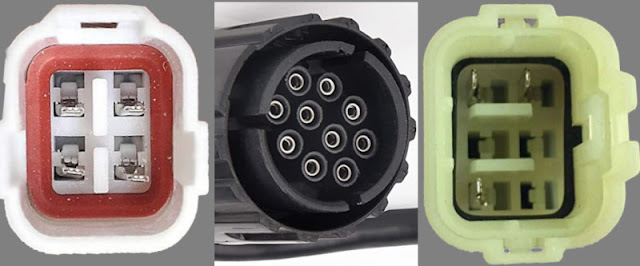 |
| Different types of adapters for 4-pin, 8-pin and 6-pin diagnostic ports on motorcycles |
You can find some pretty good adapters on Amazon.
Which diagnostic scanner should I use with my bike?
Unfortunately, there isn’t yet a one-scanner-fits-all type solution for motorcycle diagnostic scanners. This situation is likely to improve going forward, as most motorcycles become OBD2 compliant from 2021, but for older models, it will always remain a mixed bag.
A lot of motorcyclists and motorcycle accessory manufacturers recommend the OBDLink MX+ reader (around $120). Scanners by OBDLink have pretty extensive support for multiple protocols including K-line, which is common on older motorcycles. They work well with most European and American makes (works fine on my buddy’s Benelli TNT 899), although in some cases you still need an adapter.
But OBDLink readers don’t seem to work all that well on Japanese bikes older than 2016 (didn’t work at all on my 2015 Suzuki GW250).
For these, your best bet is probably to use the HealTech OBD Tool. (around $230). This reportedly works well with Honda, Kawasaki, and Suzuki motorcycles. I haven’t tried it myself, but HealTech has a pretty solid reputation on motorcycle forums. The limitation with the HealTech OBD tool is that you may not be able to use it for live data telemetrics.
As with most things nowadays, there are cheaper Chinese options out there, but the general consensus is that they don’t always work as expected.
One of the things you should be aware of is that any data transmitted on motorcycle diagnostic systems is generally visible to all connected “nodes” (devices or ECUs). When you connect a scanner to your bike, the scanner becomes another “node” on the network. If your scanner malfunctions or sends out incorrect codes, the bike will behave as though there is a problem with the bike itself.
So, if you’d like to experiment with cheap, unproven scanners, use them at your risk, and only when the bike is stationary. Definitely don’t leave such questionable devices attached to your bike when going out for a ride -- a sudden error could leave you stuck with a heavy machine to push back home.
My scanner shows an error code on my bike. What now?
There are thousands of diagnostic trouble codes defined under the OBD2 standard. There are many sites that offer a searchable list of DTCs, so doing a few web searches is the first place to start.
In addition to the standard codes that are common across all vehicles, manufacturers often also use manufacturer-specific codes. These aren’t as easy to find and sometimes can’t be found at all. In such cases, taking your bike to the dealership is probably the only option.
Conclusion
I hope this post makes the subject of motorcycle on-board diagnostics a lot less confusing. If you've got a question or a correction, do let me know in the comments below. I read and respond to every comment.
